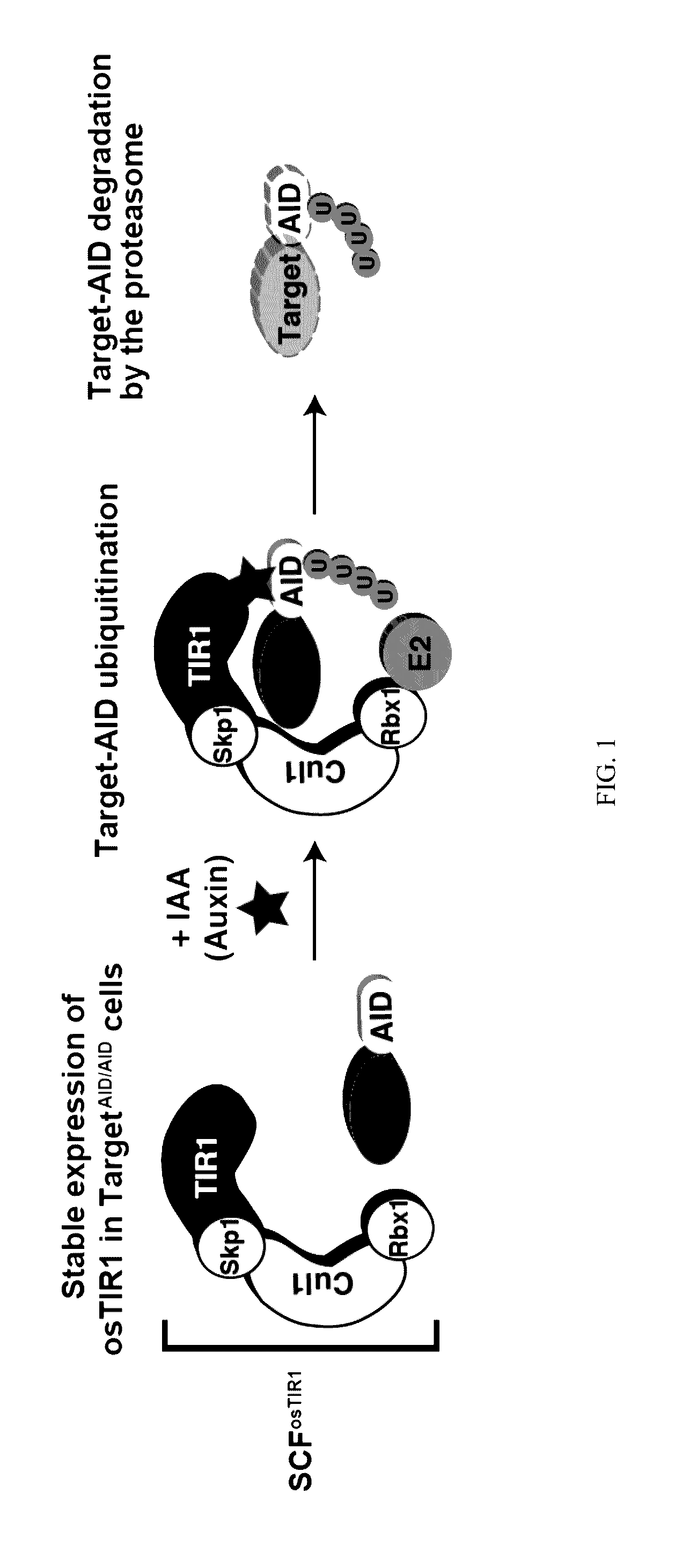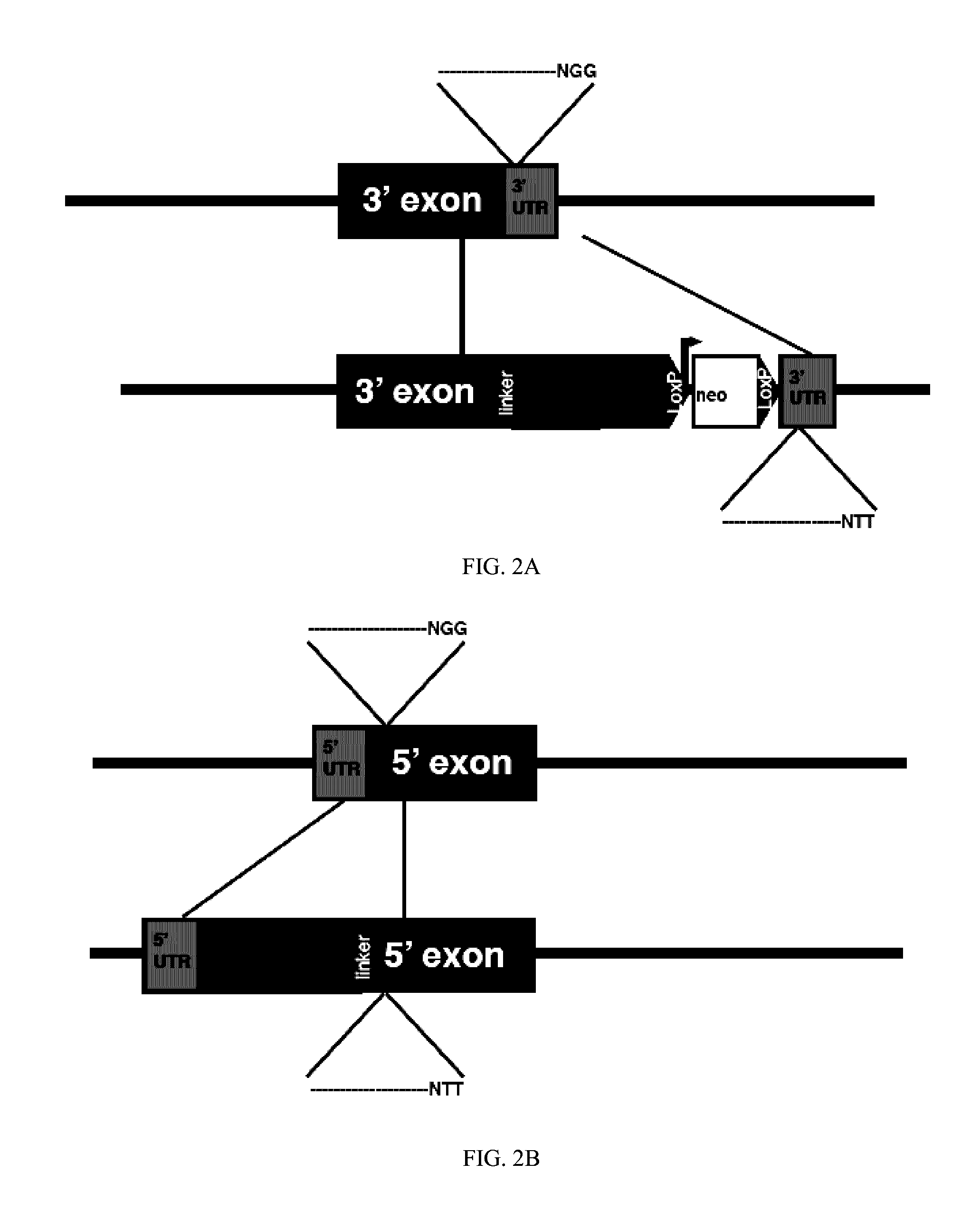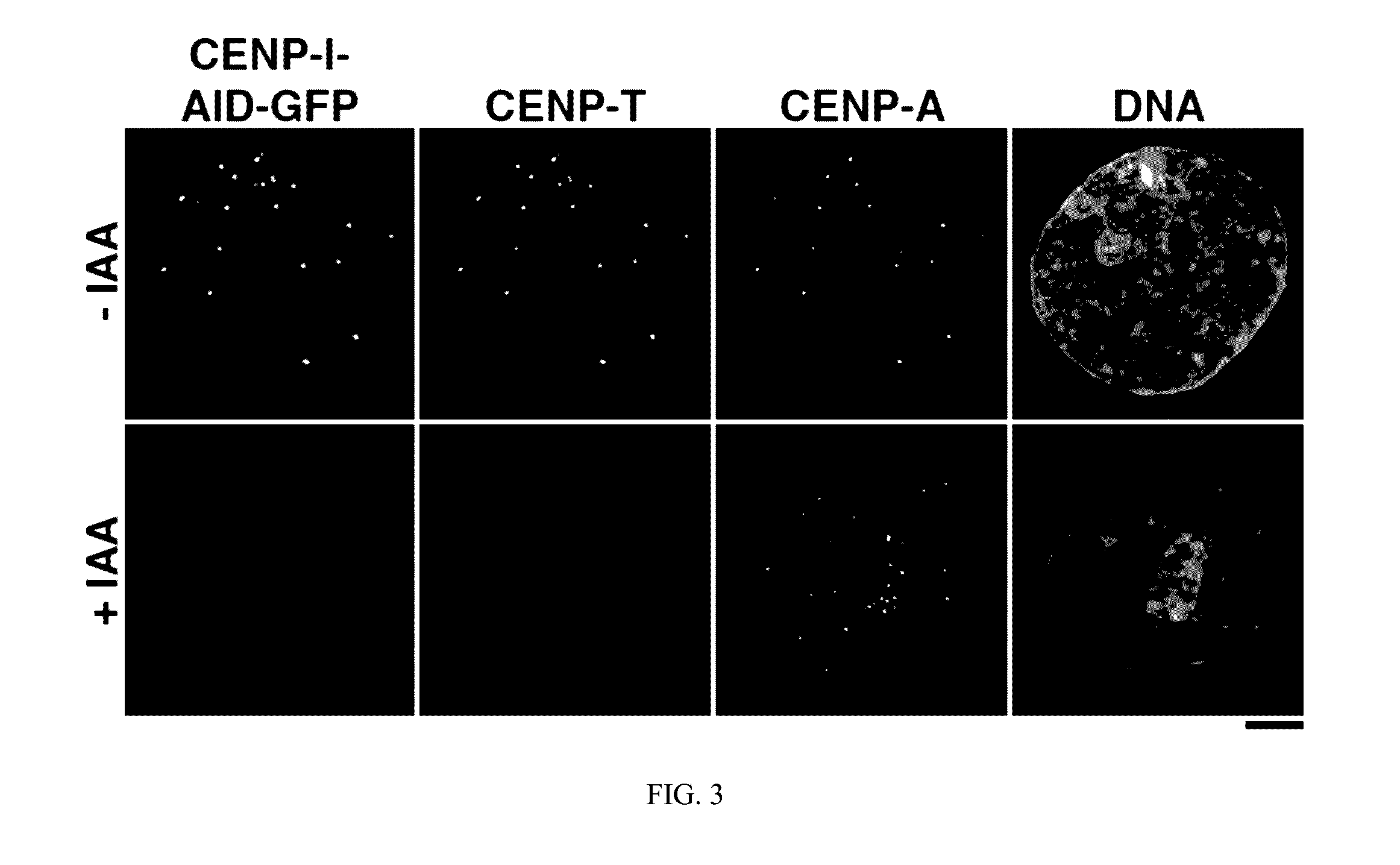CRISPR-Mediated Genome Engineering for Protein Depletion
a genome engineering and protein technology, applied in the field of protein depletion protein genome engineering, can solve the problems of inability to easily re-express in the system for further functional studies of the protein, lack of phenotype, and several methods, etc., to achieve the effect of removing the protein with the ensuing phenotype, low cost, and minimal tim
- Summary
- Abstract
- Description
- Claims
- Application Information
AI Technical Summary
Benefits of technology
Problems solved by technology
Method used
Image
Examples
Embodiment Construction
[0019]A description of example embodiments of the invention follows.
[0020]Methods of depleting a target protein by exploiting specific protein degradation pathways have been described (Zhou, Curr. Opin. Chem. Biol. 9:51-55, 2005; Banaszynski and Wandless, Chem. Biol. 13:11-21, 2006; Holland et al., PNAS 109(49):E3350-57, 2012; Lambrus et al., J. Cell Biol. 210:63-77, 2015). For example, the auxin-inducible degron (AID) system, which originates from plants, is a powerful tool to conditionally deplete protein levels (Nishimura et al., Nature Methods 6(12):917-22, 2009). Auxin represents a family of plant hormones that control gene expression during many aspects of growth and development (Teale et al., Nat. Rev. Mol. Cell Biol. 7:847:859 (2006)). Auxin family hormones, such as the naturally-occurring indole-3-acetic acid (IAA) and the synthetic 1-naphthaleneacetic acid (NAA), bind to the F-box transport inhibitor response 1 (TIR1) protein and promote the interaction of the E3 ubiquitin...
PUM
| Property | Measurement | Unit |
|---|---|---|
| Composition | aaaaa | aaaaa |
| Transport properties | aaaaa | aaaaa |
Abstract
Description
Claims
Application Information
 Login to View More
Login to View More - R&D
- Intellectual Property
- Life Sciences
- Materials
- Tech Scout
- Unparalleled Data Quality
- Higher Quality Content
- 60% Fewer Hallucinations
Browse by: Latest US Patents, China's latest patents, Technical Efficacy Thesaurus, Application Domain, Technology Topic, Popular Technical Reports.
© 2025 PatSnap. All rights reserved.Legal|Privacy policy|Modern Slavery Act Transparency Statement|Sitemap|About US| Contact US: help@patsnap.com



